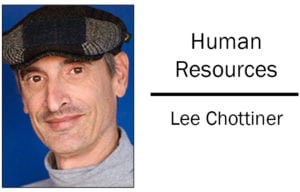 It was July 21, 1994, when I walked into the newsroom of the Morgantown, West Virginia, Dominion Post, where I worked as a staff writer, and found a letter sitting on my desk.
It was July 21, 1994, when I walked into the newsroom of the Morgantown, West Virginia, Dominion Post, where I worked as a staff writer, and found a letter sitting on my desk.
It was from my publisher, David Raese.
In his letter, David said he liked a column I had just written about my recent excursion to Argentina, so he wanted to suggest an idea for another piece. Then-West Virginia Governor Gaston Caperton had just stated that he wanted the movie Schindler’s List taught in every junior and senior high school in the state.
“My first reaction was, hey, it’s just a movie, you know, art imitating life,” David wrote. “My own daughter spent four social studies classes this year watching the movie Ghandi. My experience tells me history is better taught by reading.
“Then,” he continued, “I thought, is Schindler’s List the best way to teach our children about the Holocaust? I thought you might have some views on what would be the best way to teach our children about this subject.”
David wrote that letter over 20 years ago. I just found it again while clearing out a cupboard in my basement. Strange that it should reenter my life mere weeks after the Kentucky Legislature passed an act mandating Holocaust and genocide education for the public schools in this state. Even stranger that I should find it as we mark the 25th anniversary of the making of Schinder’s List.
But the strangest thing is this: Twenty-some years after David dropped that letter on my desk, I do have some views on the best way to teach this subject, and yes, they kind of involve that Steven Spielberg classic.
In my last column about worship in the 21st century, I asked the question, is the picture mightier than the pen? Well, when it comes to teaching the Holocaust, it isn’t even a question; of course it is.
More accurately, the video is mightier than the pen.
Millennials, and the generation coming up behind them, live by the video. They devour YouTube and Netflix; they livestream; they follow vloggers (video bloggers).
Words are increasingly caked in digital dust.
Not that the written word is no longer important. (Pardon me while I sigh in relief.) Many young people still love to wrestle with the language. I just interviewed two teenage journalists from duPont Manual High School who covered the March For Our Lives in Washington. They filled me with hope for my profession.
But the moving digital image has arrived. It won’t leave and must be given its due.
What makes this genre particularly powerful is its democracy. Today, we all have the power to make vids in the palms of our hands. The smart phone is surpassing the TV cameras broadcast reporters once lugged around on their shoulders.
For the sake of Holocaust education in the new millennium, when live survivors will no longer be part of the process, we ought to tap that palm power – now.
Here’s what I suggest: Filmmaking and Holocaust education must be married. For 20 years, Western Kentucky University inspired young people in its summer VAMPY program to express the lessons of the Shoah by creating life-size murals. Teens form groups, debate themes, research subjects, then recreate those subjects and themes on canvas.
Why not do the same with videos? Films such as Schindler’s List and the veritable library of other Holocaust genre movies made throughout the years could be rotated through a curriculum.
But don’t stop with movies. Video testimonies given by survivors no longer living continue to live on the internet; they can be accessed through Yad Vashem, the U.S. Holocaust Memorial Museum and other institutions.
And yes, as David suggested, reading remains a magnificent way to study the topic. Harnessing mind and imagination, as a good book does, re-enforces a lesson for life.
Just let the kids be filmmakers. Expose them to all these tools and see what kind of Shoah-inspired videos they produce. Their interpretations might surprise us.
To be honest, I can’t recall how I responded 20-some years ago after David dropped that letter on my desk. I can’t recall if I responded at all.
But I do know Schindler’s List changed and expanded the Holocaust discussion, to the point where even the governor of, and a publisher in, a small Appalachian state saw value in making the movie a part of the learning experience.
As we seek fresh, new ways to teach the Holocaust, let us appreciate that same value.
(Lee Chottiner is the editor of the Jewish Louisville Community.)


